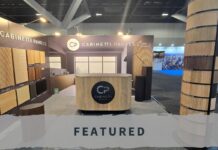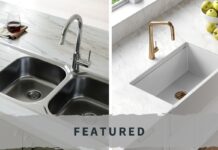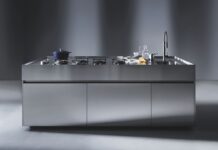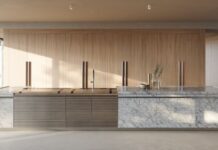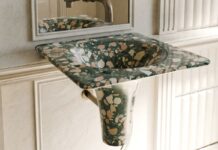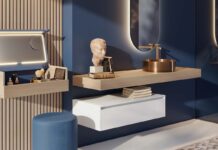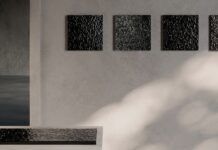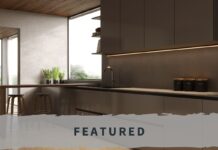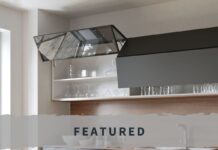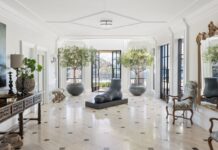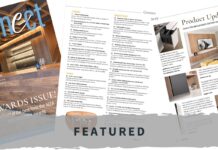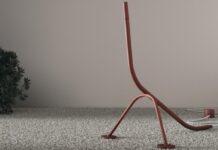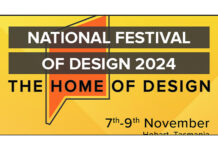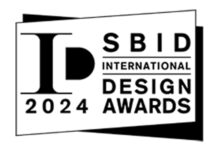 Thought about changing the way you do things recently? In this, another excellent piece from KBB Review in the UK, kitchen designer Darren Morgan suggests that rather than create a destination store with a coffee shop, why not create an in-vogue Mecca for design where kitchens may even be secondary to a wider vision?
Thought about changing the way you do things recently? In this, another excellent piece from KBB Review in the UK, kitchen designer Darren Morgan suggests that rather than create a destination store with a coffee shop, why not create an in-vogue Mecca for design where kitchens may even be secondary to a wider vision?
“We all know how hard it can be to take advice, especially when it doesn’t fit with the master plan we have created for ourselves or our business. So when advice is offered, it’s probably best to remember that the most successful people in business always surround themselves with experts – individuals who can objectively help them to see exactly what they may be have been missing and who help to encourage diversified thinking.
As an industry, we have always found it difficult to see past the status quo and to progress beyond what has worked for us in the past. It has proved even more difficult for us to swallow our pride and embrace the professionally regulated standards and methods of training used to control and regulate other design sectors. It was therefore refreshing to read the objective views of retail intelligence expert Matthew Brown in a recent copy of kbbreview. Brown suggested that diversification could help to transform stagnant showrooms into desirable and versatile retail destinations.
Many of his ideas make perfect sense. After all, we are all striving to deliver our own particular spin on the KBB retail experience. Providing potential clients with additional reasons to visit your store is fantastic advice, as this can increase the profile of your company and open new doors to business along the way. Brown suggests that one way of doing this within the KBB sector is to include an element of hospitality within your showroom, possibly in the form of an adjoining coffee shop or tea room. This idea has a proven track record, but unfortunately it may only be a realistic option for a small minority of retailers who have the space, the budget and the know-how.
Radical diversification into a new enterprise like a showroom coffee shop could well deliver the increases in footfall that you need to generate more business, but the learning curve required could also become a distraction to your primary business and the additional overheads involved may inflict misery if you don’t think it through properly. Surely it should be easier to transform the potential of your business by improving your internal processes, helping your business to deliver beyond the current industry standard. Instead of creating a destination for good coffee and cakes, maybe you could use innovation and good practice to create a destination for design.
Some retailers believe that the hasty production of a 2D CAD drawing accompanied by an over-scripted sales pitch is all that is required to deliver a dedicated following of design disciples and unfortunately our industry has not been able to argue otherwise. The lack of standard practice guidelines within the KBB industry has left gaping holes in the quality of design work presented and this may be why so many retailers have been reluctant to charge for their design work. An over-reliance on standardised product catalogues, and the continuing dismissal of design as an important part of the overall process, has led many clients to believe that KBB showrooms are devoid of innovative design inspiration.
To transform a business from a simple showroom into an in-vogue design destination, retailers need to educate themselves and adopt the processes and practices that are being used successfully elsewhere within the design industry. Even if this means fraternising with the enemy. The worlds of KBB design and interior design would seem to run parallel, occasionally being allowed to bridge the void of industry politics to form a unique opportunity for success. Some KBB designers have felt threatened by interior designers, fearing that their involvement in KBB affairs would only dilute the passion and identity of design in our industry. But get this, interior designers have invested time and money in their profession and earnt a rite of passage by traversing an educational pathway. This ultimately means they experience little difficulty in getting paid for their designs making the KBB rabble look a little forlorn, as we incessantly moan about not getting paid for the work that we do.
So let’s forget about the coffee shop and create a really desirable design destination. To do this, you will need to rethink your allegiance to the product catalogue that has kept you safe from criticism and appreciate that there is a big wide world out there that is full of colours, forms and textures. Then you will need to look at your processes. Are you happy to just sell kitchens and bathrooms, or will you become excited about creating vibrant interior spaces that just happen to have a kitchen and bathroom included… even as a secondary element to a bigger design vision.
You may need to find ways of validating your design process by adopting the type of methods used by interior designers. Mood and colour boards could be added to your presentations to deliver a sensory experience that your client will remember. Widening the depth of your design process to include these elements takes time, knowledge and talent, so charging for design will no longer be something you’ll have to think about – you’ll just have to do it.
Your confidence about charging for design should not come from what others in the industry are doing or saying. It should come from an appreciation of how your business is adding value to the overall experience. Realising that you are a designer first and a retailer second can be a revelation to many people, as it helps to unshackle their business from the restrictions of a product catalogue and allows them to consider design as an idea, not just a range of products that they hope to shift to the unsuspecting public.
Once you realise that design does not finish on the last page of your kitchen component catalogue, you will begin to add value to your business, adopt new ranges and ideas that can transform your humble kitchen showroom into an emporium of design that is the epicentre of creative thinking. Before you know it, new revenue streams will have opened up in the most unsuspecting places.
So before you jump in head-first and open a coffee shop, just consider how adding another string to your bow may be as easy as adjusting the depth of your processes and the range of your products. If you consider yourself to be a designer, then just do what your good at and use your skill to enhance the reputation of your business. If you don’t, you may just find yourself serving coffee in a shop.”
So – is Darren right – again? Let us know your thoughts…


